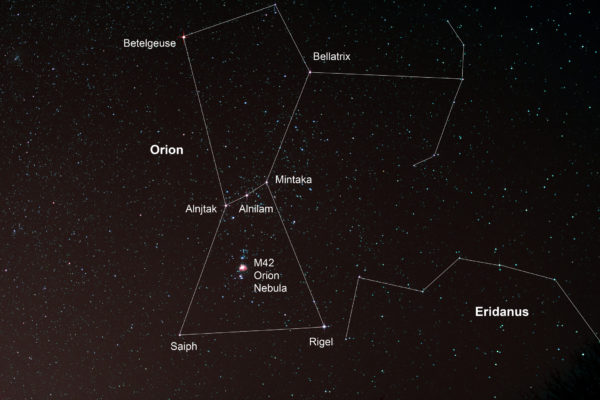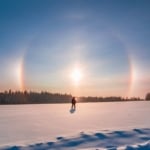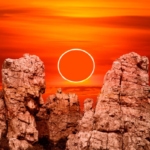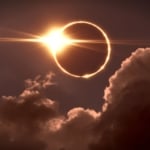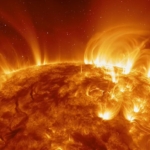Exploring The Stars That Make Up Orion
Here's a closer look at the stars that make up the most-recognized constellation in our night sky.
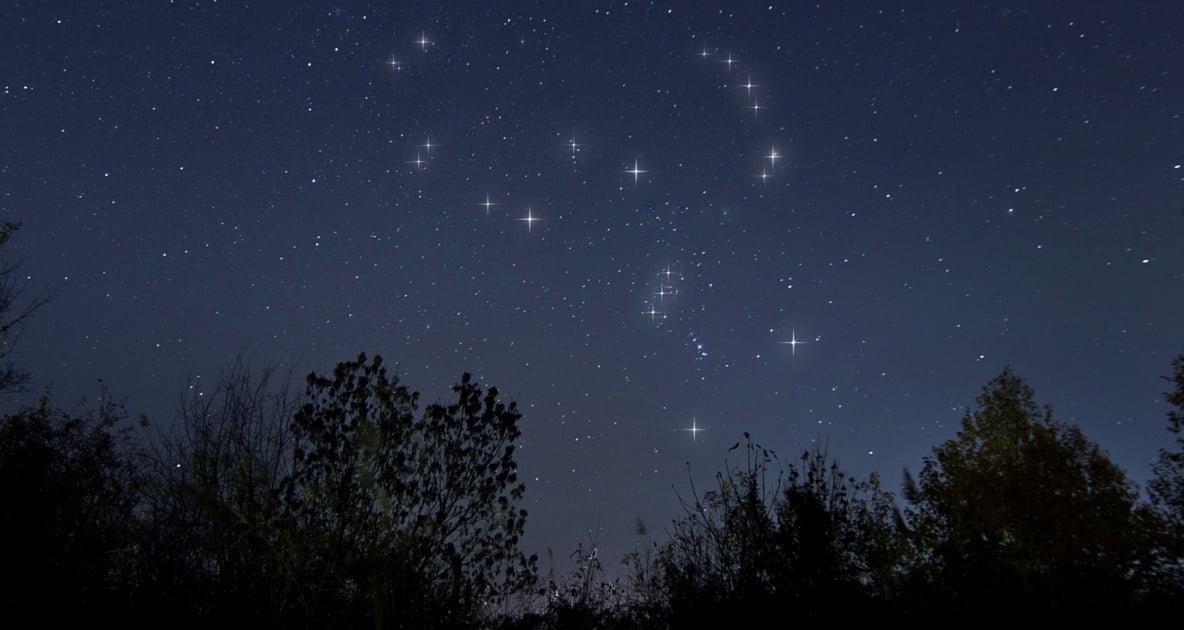
Dominating our southeast sky so splendidly at around 9 p.m., local time is the brilliant constellation of Orion, the Hunter, surrounded by a large procession of other bright stars. Perhaps the most eye-catching feature of Orion is the fascinating trio of second-magnitude stars that form his belt, which have the catchy alliterative names Alnitak, Alnilam, and Mintaka.
This trio of stars is mentioned in the Bible, in Job 38:31:
Canst thou bind the sweet influences of the Pleiades,
or loosen the bands of Orion?
This is the King James Version; some of the later translations clearly mention “the belt of Orion.” Most of the brilliant stars that comprise Orion are very far from us, as naked-eye stars go. With the exception of the ruddy star, Betelgeuse (pronounced BET-tal-joos”), these stars are highly luminous; hot young bluish objects that are true galactic beacons.
Put simply, these are stars that are literally “burning the candle at both ends.”
Alnilam, for example, is some 375,000 times more luminous compared to our Sun!
To get a sense of Beteguese’s size, take a look at the animation below:
This region of the sky also forms the most conspicuous part of Gould’s Belt, named after Benjamin Apthorp Gould (1824-1896), who called attention in 1874, to a band of bright stars that roughly coincides with the Milky Way. These blue stars optically dominate our galaxy’s disk, in which lie its spiral arms. Our solar system is within one of the arms.
The Great Orion Nebula
Also within the constellation of Orion is an incubator of stars: The Great Orion Nebula. It appears to envelop the middle star of the three that mark the sword of the Hunter. It is a vast cloud of glowing gas, its immensity beyond comprehension, its physical conditions almost unimaginable. To the naked eye, it appears not as a point of light like a star, but as a diffuse spot that is dim, yet unmistakable. In a telescope, it appears as an irregular, fan-shaped mass with a greenish-gray hue.
In much the same way that phosphorescent paint appears to glow under black light, so does the light by which the Orion Nebula shines; the gases react to the strong ultraviolet radiation from the high-temperature stars nestled within in it.
Modern astrophysics now confirms that this nebula is one of the regions of space where star formation is presently underway. We see the Orion Nebula tonight glowing by the light that started toward Earth some 1,344 years ago! Its diameter is about 24 light-years, but the density of all this gaseous material is less than a millionth the density of the best laboratory vacuum. Yet the total mass of the cloud – tenuous as it is – is 2,000 times the total mass of our own Sun.

Joe Rao
Joe Rao is an esteemed astronomer who writes for Space.com, Sky & Telescope, and Natural History Magazine. Mr. Rao is a regular contributor to the Farmers' Almanac and serves as an associate lecturer for the Hayden Planetarium in New York City.

